Review: Google Nexus 5
Nov 11, 2013, 4:41 PM by Eric M. Zeman
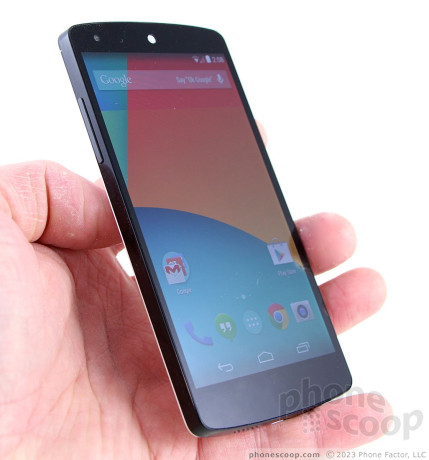
Phone Scoop tests Google's Nexus 5 on AT&T and T-Mobile's networks. Here is our in-depth look at Google's latest stock Android smartphone. It has the software many people want, but can the hardware keep up?
Form
Is It Your Type?
Google introduces one Nexus-branded smartphone each year. The Nexus 5, which runs Google's version of Android 4.4 KitKat, is a device for enthusiasts who are more interested in Google's software than the hardware. Other devices in the market have superior designs, but may seem held back by customized versions of Android. The Nexus 5 is pure Google, to a fault.
Body
The Nexus 5 is a plain-looking handset. It is almost devoid of any design elements, beyond the basic shape. It has the general look that has come to be associated with Nexus handsets, but is even more spartan in its appearance than last year's minimalist Nexus 4. The Nexus 5 is as simple and boring as it gets, folks.
The Nexus 5, which is made for Google by LG, comes in two colors, white or black. Both devices have a black front panel and black sides. The only real difference between the two is the rear cover. The white one is smooth, vanilla plastic, while the black one has a bit more of a soft-touch finish to it. The black one feels better to me than the white one.
The Nexus 5 is a big phone. It's significantly taller than the Nexus 4, and even out-sizes the HTC One. Thankfully, it falls well short of Galaxy Note 3 dimensions. The 2.72” width is right on the border of being too wide, but manages to keep shy of breaking that barrier. It is delightfully thinner and lighter than the Nexus 4. In fact, that's the first thing I noticed when picked it up: it has a really nice feel to it. It will easily slip into pockets, though the length and width remind you that it is there.
The materials and build quality of the Nexus 5 are not great. In fact, I'd go so far as to call the Nexus 5 somewhat cheap feeling. The Nexus 4 had a glass front and glass back. Though the glass back was impractical (mine broke), it gave the Nexus 4 a nice, quality feel. The Nexus 5 is a clear step backwards in that respect, and is probably one reason for its lower price. The rear plastic shell is thin, and the seams are not tight at all. In fact, one section of the rear shell sticks out along the side of my unit because it doesn't fit well. C'mon, Google. The whole thing almost feels like a toy. Almost.
The front of the N5 a clear black panel of glass. There are no front buttons, physical or capacitive. The N5 uses Android's on-screen buttons that come and go when needed. The bezels along the sides of the display are fairly thin, though not as impressively narrow as on LG's G2. There's a white circular speaker grill near the top that is plainly visible on the white version, as is the small lens for the user-facing camera. Those are the only physical markings on the black glass surface.
The back panel is gently curved to more comfortably fit into the hand. The plain polycarbonate panel is overly simplistic, but matches the Nexus 7 tablet's design thanks to the large, etched "NEXUS" branding. The camera housing is somewhat annoying. First, it is larger than I expected it to be on the back surface of the phone. Second, it has a pronounced ring that sticks up and circles the lens. This ring catches your hand when you're holding the Nexus 5 and isn't comfortable.
There's something to be said for simplistic designs - the design doesn't get in the way of usability. The Nexus 5 avoids the one critical flaw LG made with the G2: The volume toggle is on the left edge of the phone rather than on the back. According to Google, the buttons themselves are made from ceramic. Both the volume toggle and the screen lock button (on the right side) have sharp profiles. The buttons have edges that make themselves felt and you're thumb is seeking them out. The travel and feedback of both buttons is quite good. I much prefer the proper side buttons over the rear placement on the G2.
The N5's back cover is not removable, which means neither is the 2,300mAh battery. There's a tray for the SIM card placed adjacent to the screen lock button. There's no slot for a memory card, though. The N5 supports wireless charging and NFC.
Honestly, I am quite disappointed in the hardware. The design is boring and the quality just isn't good enough. If the Nexus 5 cost any more than $349 unlocked, I'd send it back.
Performance
Screen
The N5's screen measures 5 inches across the diagonal and has 1920 x 1080 pixels for full HD. LG favors in-plane switching (IPS) LCD panels, and the N5's is no different. I like the screen a lot. It is probably my favorite feature of the N5. Not only is it large and bright, but the resolution makes everything on the screen crisp and smooth. Colors look accurate to my eyes, but - like many LCDs - there's a pretty steep drop in brightness when the phone is tilted side-to-side. But it is still bright enough for use outdoors under the sun.
Signal
We tested the Nexus 5 on both AT&T and T-Mobile networks. It performed admirably on both.
AT&T: Across New Jersey, Pennsylvania, and New York, the Nexus did a great job connecting to AT&T's network. It held on to the network firmly. It switched between LTE and HSPA seamlessly. It connected all calls on the first attempt and never dropped any calls during the review period. It did miss a couple of calls when in a fast-moving car in rural Pennsylvania, though. Data speeds were decent under most network conditions and appreciably quicker when LTE was available.
T-Mobile: I tested the Nexus 5 on T-Mobile's HSPA and LTE networks in New Jersey and New York City. It performed on par with other T-Mobile devices in that it always remained connected to the network and did well when it came to connecting and maintaining phone calls. Data speeds varied a lot. When T-Mobile's signal was weak (1 bar,) the N5 had trouble loading web pages, but it sped right up once network conditions improved a bit.
The Nexus 5 is quite rare in that one variant (the D820 sold in the U.S.) can connect to all of the various LTE frequency bands used by AT&T, T-Mobile, and even Sprint. (A second variant — the D821 — has better support for LTE networks in the rest of the world, including Canada.)
Sound
In general, call quality was pretty good on both AT&T and T-Mobile's networks. The earpiece produces calls that are mostly free of stray noises, and the volume was very good, though short of excellent. I was able to hear calls in most environments, and setting the volume all the way up meant I could hold a conversation despite jackhammers in the background. It wasn't loud enough to overcome the music and chatting in a noisy bar, though. I appreciate that setting the volume up all the way didn't distort the sound. The speakerphone also rates well. Quality is slightly above average and the volume is enough for your home or enclosed office. I wish the speakerphone produced more volume for noisy environs, but it suffices. Ringers and alert tones could definitely be louder. They can be hard to hear when you're out in the world, even when set all the way up. The vibrate alert is average.
Battery
In a word, inconsistent. After a week of testing on both AT&T and T-Mobile's LTE networks, I can say the Nexus 5 doesn't quite make it through a full day. You might get 12 hours of real-world usage out of it, and maybe a bit more if you skimp. It is frustrating that Google would put a 2,300 mAh battery in a device that has a 5-inch FHD screen and a quad-core processor, especially when the LG G2 — on which the N5 is based — has a 3,000 mAh battery. The N5 battery can drain fairly quickly even when not being used, so you need to be careful and monitor your usage. I recommend carrying an external battery pack or a spare charger.
Basics
Menus
The Nexus 5 runs Android 4.4 KitKat. Nexus devices are often referred to as using “stock” or “pure” Android, meaning the software has no customizations from the manufacturer nor carrier. Whatever you call it, the Nexus 5 behaves as Google wants it to, not as LG, AT&T, T-Mobile nor anyone else wants it to.
Phone Scoop has an in-depth review of Android 4.4 KitKat available here. Please head that way for our full discussion of the operating system. Here's a short summary of how it works, specifically on the N5.
The Nexus 5's lock screen offers only a single shortcut, to the camera. You can choose from several different types of security, or leave it entirely unlocked if you wish. The lock screen also allows widgets that provide a preview of apps such as Gmail, SMS, and so on. These can be turned on or off and customized however you wish. The good news is you can access the notification shade even when the device is locked, if you wish.
There are only three active home screen panels out of the box, and one of them is reserved for Google Now. You can add apps, folders, shortcuts, and widgets to the home screen panels with a new tool for managing the screens. The design of the home screens is slightly cleaner and the new customization tool puts all the options in one spot. A hidden trick feature lets you add more home screens.
The main app menu has fewer, larger icons. Frustratingly, if you're used to Android Jelly Bean, the app menu loses access to widgets. The convenient button to add apps from the Play Store is also gone.
The settings tools are the same as on devices running Android 4.1 - 4.3. The controls are laid out in a simple list with similar functions grouped together (e.g., the wireless radios under one heading).
In terms of performance, the Nexus 5 has a 2.3 GHz quad-core Snapdragon 800 processor (Qualcomm's best offering at the moment) with 2GB of RAM. I didn't notice any performance trouble with respect to most apps, screen transitions, or animations. Almost everything ran smoothly, with the exception being some random app crashes here and there (most likely to buggy code than the hardware.)
Calls/Contacts
The Android 4.4 KitKat dialer is significantly different from earlier versions. It now prioritizes the most recent call with a Caller ID function. Google does some behind-the-scenes work to pull up data about all incoming calls, including name, number, location (addresses), etc. It reveals all these details near the top of the screen in the phone app. The most recent call takes up about a third of the phone app's home screen. Below this call log you'll find your favorites or most frequently contacted peeps. In order to view the full call history, dialer, or other contact groups, you have to press buttons located at the bottom of the screen. It will likely take some getting used to for most people.
The People (contacts) application itself has some minor design changes, but is otherwise similar to what you already know and love (or dislike) about this app. The design is fairly spartan, but the search function makes it easy to find people if your contact database is large. Individual contact cards can hold tons of details about people. As always, there are direct-dial and direct-message shortcuts, as well as contact shortcut widgets for the home screen that put important people at your fingertips.
Messaging
The Nexus 5 has all of the basic Android messaging tools: Gmail, email, Hangouts, and Google+. The Hangouts app is now Google's overarching messaging system that encompasses both SMS and instant messaging. It is a wee bit confusing. It creates a jumble of SMS and IM conversations that often leaves you with two threads per contact. I like that it is visually richer than the old Android SMS app, but it borders on cluttery with panes, panels, images, and different colors all over the place. It takes a while to get the hang of in terms of managing SMS/IM conversations. Microsoft has done something similar with Windows Phone, but its implementation is easier to decipher.
The rest of the messaging apps work as they do on the Nexus 4 or any other Android handset.
Neither Facebook nor Twitter is preinstalled on the Nexus 5.
Extras
Media
Google's Play Store is the only place to purchase content on the Nexus 5 unless you choose to download an alternative. The Play Store itself is easy to browse and search through for apps, music, games, books, TV shows, and magazines. Each of these content types then has its own app for consumption. You use the Play Music app to listen to music, the Play Video app to watch video, and so on. They all have a similar look and feel, so mastering them is no problem. Google's selection of movies and music isn't quite as good as Apple's, but its selection of apps is.
Music sounded pretty good through my favorite headphones, though I've heard better from devices made by HTC and Apple. The sound was a bit flat and neutral to my ears. Video looked great on the N5's full HD screen. I enjoyed watching some HD video clips on the phone.
Camera
The Nexus 5's camera is one of its weakest elements.
First, the software. The Android 4.4 KitKat camera is slightly more user-friendly than the one from Android 4.3 Jelly Bean, but barely. It is simplistic to a fault.
The viewfinder is almost entirely devoid of controls. They are all lumped together on the right edge (when the phone is held horizontally.) The shutter button is large, and it's easy to switch to one of the base shooting modes (normal, panorama, PhotoSphere, or video). The advanced controls aren't labeled at all and are therefore somewhat hidden. A circle on the right side of the screen will open the top-level settings menu. From there, you can dig in a bit and control exposure, image size, white balance, the flash, and so on. These menus are pretty, but futzy and relatively difficult to manipulate.
The individual shooting modes and controls all work as they should. The panorama mode produced panoramas; the HDR mode produces more balanced images; and the fine-tuning selections make the appropriate adjustments.
The camera has one major, fatal flaw: It is slow as hell. There's no reason for such simple camera software to be so slow on a device with a quad-core processor and top-end Adreno graphics engine, but that's the case with the Nexus 5. I can't tell you how many shots of my niece I missed over the weekend because the N5 took its sweet time focusing and shooting the images. It's really bad. The time lapse between when you press the button and when the shutter actually fires ranges from 1 to 5 seconds, with almost no indication of when the picture will actually be captured. Google has to fix this.
As much as people like to tout the benefits of stock Android, Google simply doesn't know what it is doing with camera software. HTC, LG, and Samsung all make better smartphone cameras. Fortunately, you can download third-party camera software and use that instead. (A quick test if a third-party camera app such as Camera FV-5 did not show marked improvement in thhoto quality, though.)
Photos
Based on the slow performance of the N5's camera, far too many of the resulting images were useless. I got so many out-of-focus images of an important family event over the weekend that I was fuming I'd left more capable smartphones at home. Aside from the poor timing / focus issue, images are often grainy and rather neutral. Colors often fell flat and almost none of the images had any life to them. In this day and age, camera performance this poor is inexcusable, especially when we know LG had a capable 13-megapixel sensor in the G2 — on which the N5 is partly based — and Google replaced it with the N5's 8-megapixel sensor. The Nexus 5 is not a good cameraphone.
Video
Video fares somewhat better than pictures do. Focus was more consistently good, there was less grain, and colors looked somewhat better. The video camera tools are bone thin compared to other flagship devices, though, and you don't have too many options for flexing your creative muscles. The N5 produces results that are worth sharing via YouTube, but serious videographers should look elsewhere.
Gallery
There are two photo-managing apps on the Nexus 5. The first is the standard Android gallery, which is carried over directly from earlier versions of Android. It arranges photos into groups, and lets you see which photos are stored on the device, versus your various online accounts. Editing features include crop, rotate, red-eye reduction, and the ability to manage color/exposure through the use of various filters.
Then there's the new “Photos” app, which is the Photos portion of the Google+ application, pulled out as a stand-alone piece of software. The Photos app only sees your camera roll and Google+ photos, and can be used to edit/share them. The Photos tool uses the same editing tools that are present in the Google+ app. They vary from the stock gallery app just a bit, and include some frames, Auto-Awesome, and a different selection of filters. Edits made to photos in the Photos app are automatically synced with your Google+ account (if you have syncing enabled.)
Browser
The Nexus 5 ships with just the Chrome browser. I like Chrome mostly because of the way it helps to manage tabs and sync with my desktop browsing sessions. It also does a decent job of rendering HTML web sites. It's not very fast on the Nexus 5, though, even over Wi-Fi. Loading web sites took a lot longer than I wanted to over both AT&T and T-Mobile's LTE networks. The data speeds themselves were good, but Chrome's ability to take advantage of LTE isn't up to par, at least not on the N5.
Apps
One benefit of the stock Android experience is that there is absolutely no manufacturer or carrier bloatware on board. (Whether or not you view Google's own apps as bloatware is up to you.) There are a good number of Google apps pre-installed on the N5, as expected, which cover all the bases you need for a good experience out of the box. Perhaps the biggest standout is QuickOffice, which can be used to open and edit Microsoft Office documents. It's too bad editing features are limited, and QuickOffice doesn't play well with Google Drive documents yet.
Bluetooth
The Nexus 5 has Bluetooth 4.0 Low Energy on board. I didn't have any trouble connecting it to different devices for audio. Phone calls made through my car's hands-free system were OK, but not great. Volume - or the lack thereof - was the biggest problem. Music streamed to my favorite Bluetooth headset sounded mediocre. I was also able to connect the N5 to other smartphones and PCs without issue.
Clock
The lock screen shows a basic clock. It can be set to analog or digital. They're both hard to see when you're outside thanks to the thin, white design of the clock faces. I liked the thicker font used for the Android 4.3 clock a bit better. The actual clock application includes a world clock, timer, alarms, and stopwatch. There are innumerable clock widgets for the home screen panels.
Google Now
Google has boosted Google Now's visibility by giving it a home screen panel all to itself. Google Now is Google's voice-enabled search app. It is quite good at translating speech to text and acting on the commands issued by owners. The app is accessible from the lock screen, and the new OK Google voice prompt can open the app whenever you see the search bar. Google Now automatically helps you manage some aspects of your life, especially those pertaining to your schedule and travel needs. Google Now will learn your daily commute and can warn you if there are traffic problems. It can remind you to buy tickets to see your favorite band. It can warn you that the weather for tomorrow is going to be particularly nasty, and so much more. Google Now is more useful than ever, and outclasses Apple's Siri by a mile.
GPS
The Nexus 5 includes the excellent Google Maps software. The app runs particularly well on the Nexus 5 and helped me avoid a real-life accident on a rural highway when driving home late at night. Together with Google Now, the Nexus 5 warned me that traffic was stopped ahead and diverted me off the highway and around the accident so I could continue my drive home without too much lost time. The GPS radio worked well, though it was a bit slow to locate me. It was accurate to within 25 feet, but took between 15 and 20 seconds to pinpoint my location.
Wrap-Up
The Nexus 5 is a frustrating enigma. The native Android code offers a lot of appeal, with a few notable exceptions. Nexus devices are always the first to receive system-level updates from Google, so the Nexus 5 will be on tap to get the next few major versions of Android, just as the Nexus 4, 7, and 10 have. This means people obsessed with having the latest version of Android will always know where to get it. But the Nexus 5 asks owners to sacrifice a lot.
First, the N5 has a boring, cheap design. The plastics and build quality simply aren't up to par with other high-end smartphones. The screen may be great, but the smaller, non-removable battery means the N5 struggles to provide a full day of use. We appreciate, however, that the N5 performed well on both AT&T and T-Mobile's networks, and includes NFC and wireless charging.
The changes to Android itself clean up the design, though some functions have gone missing. Further, Google still doesn't know how to design usable camera software. Speaking of which, the camera is just not good enough for a modern smartphone. Perhaps it can be improved with a software update, but Google hasn't indicated any such fix is on the way.
If you value high-quality hardware and high-quality mobile imaging, I can't recommend the Nexus 5. You're better off sticking with the HTC One Play Edition and Samsung Galaxy S4 Play Edition, which offer better hardware and the same “stock” Android software.
The one major caveat here is the price. Google is selling the Nexus 5 for $349 (16GB) and $399 (32GB). That's for an unlocked device not beholden to a carrier contract. Most other unlocked devices, including the Play Edition models referenced above, sell for $600 or more. If you think the lower price point offsets the cheap design, mediocre battery life, and poor camera performance, then perhaps the Nexus 5 is what you're seeking.
Comments
The HTC nexus one was a great premium device on its own, by it's time. It was supposed to encourage hardware makers and carriers to start making premium android devices. It accomplished it's goal, now ...
(continues)
Tired of biased reviews from Eric
P.S the Galaxy s4 is plastic too.
Some people is thinking on getting te N5 because of it's price point (given it's tech level) and because it will continue receiving updates from google for about 2-3 years. Though, theese people do care about battery...
(continues)


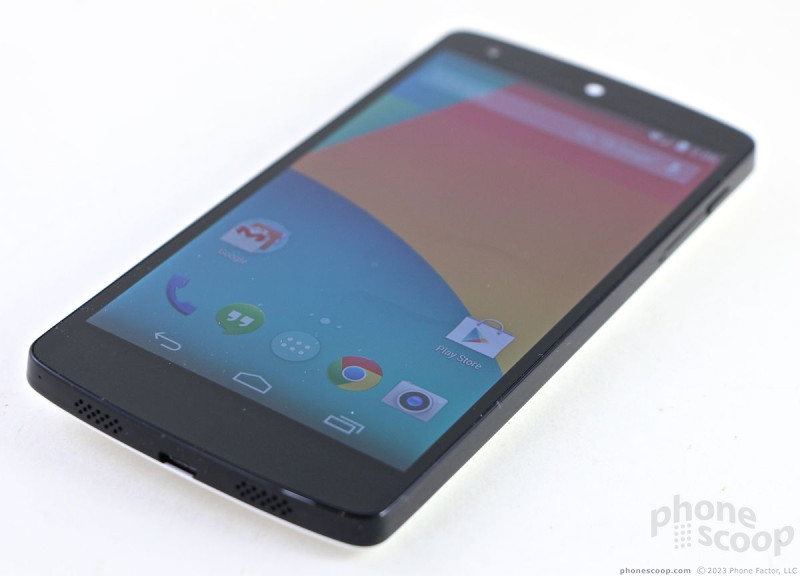































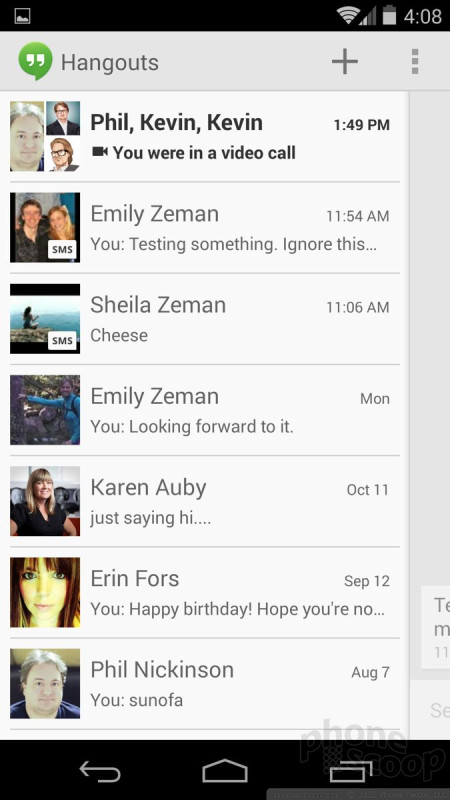







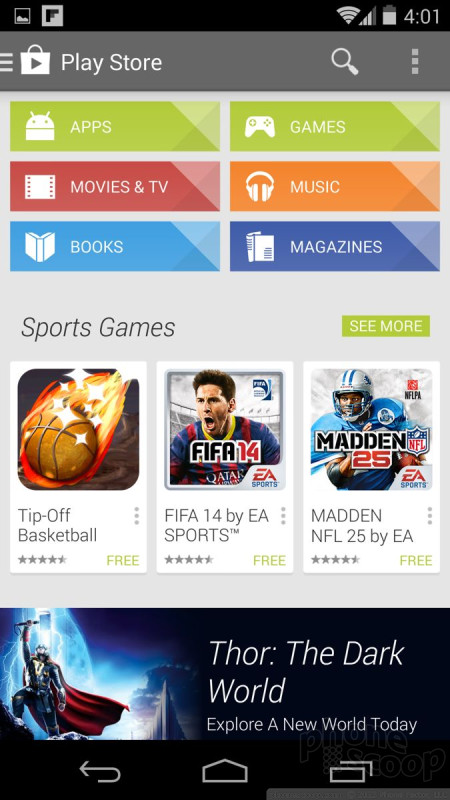





























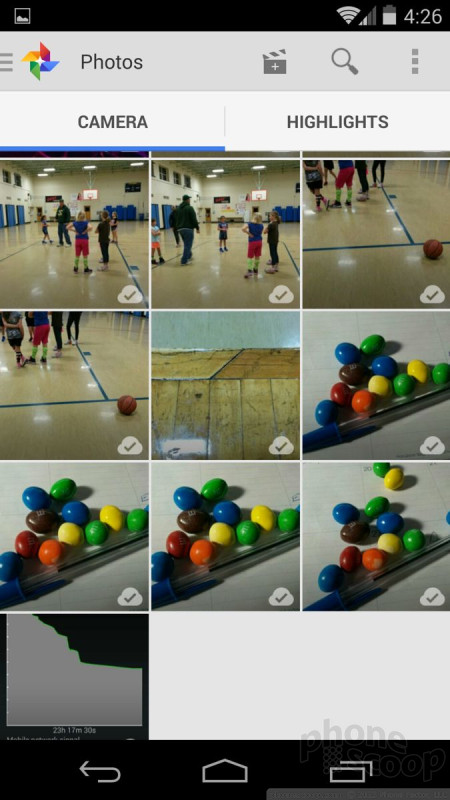




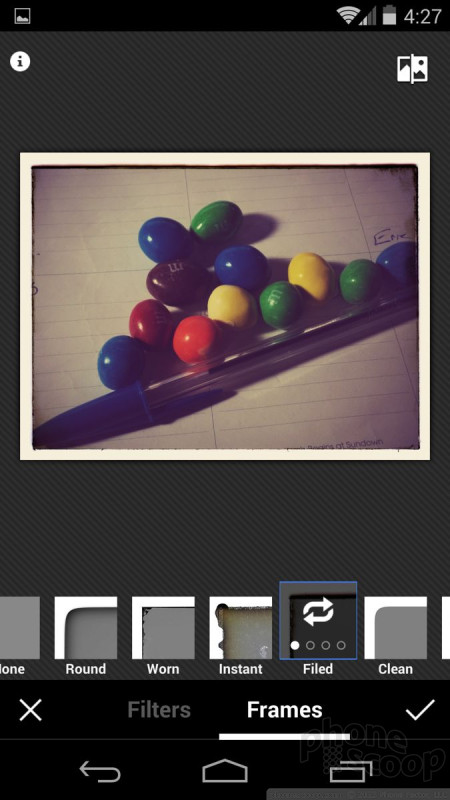




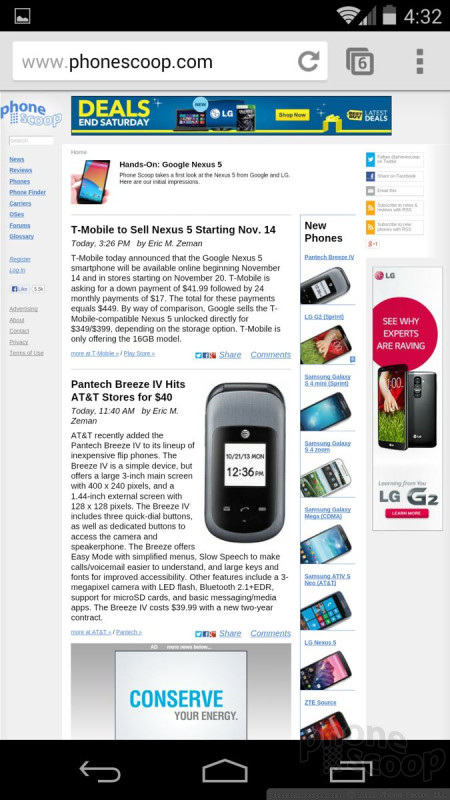















 Use Different Camera Apps to Improve Photo Quality
Use Different Camera Apps to Improve Photo Quality
 Hands-On: Google Nexus 5
Hands-On: Google Nexus 5
 FCC Reveals Photos of Possible Nexus Made by LG
FCC Reveals Photos of Possible Nexus Made by LG
 Google Nexus 5 Now Available in Red
Google Nexus 5 Now Available in Red
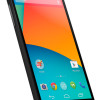 Google Reveals Nexus 5 with Android 4.4 KitKat
Google Reveals Nexus 5 with Android 4.4 KitKat
 LG Nexus 5
LG Nexus 5











